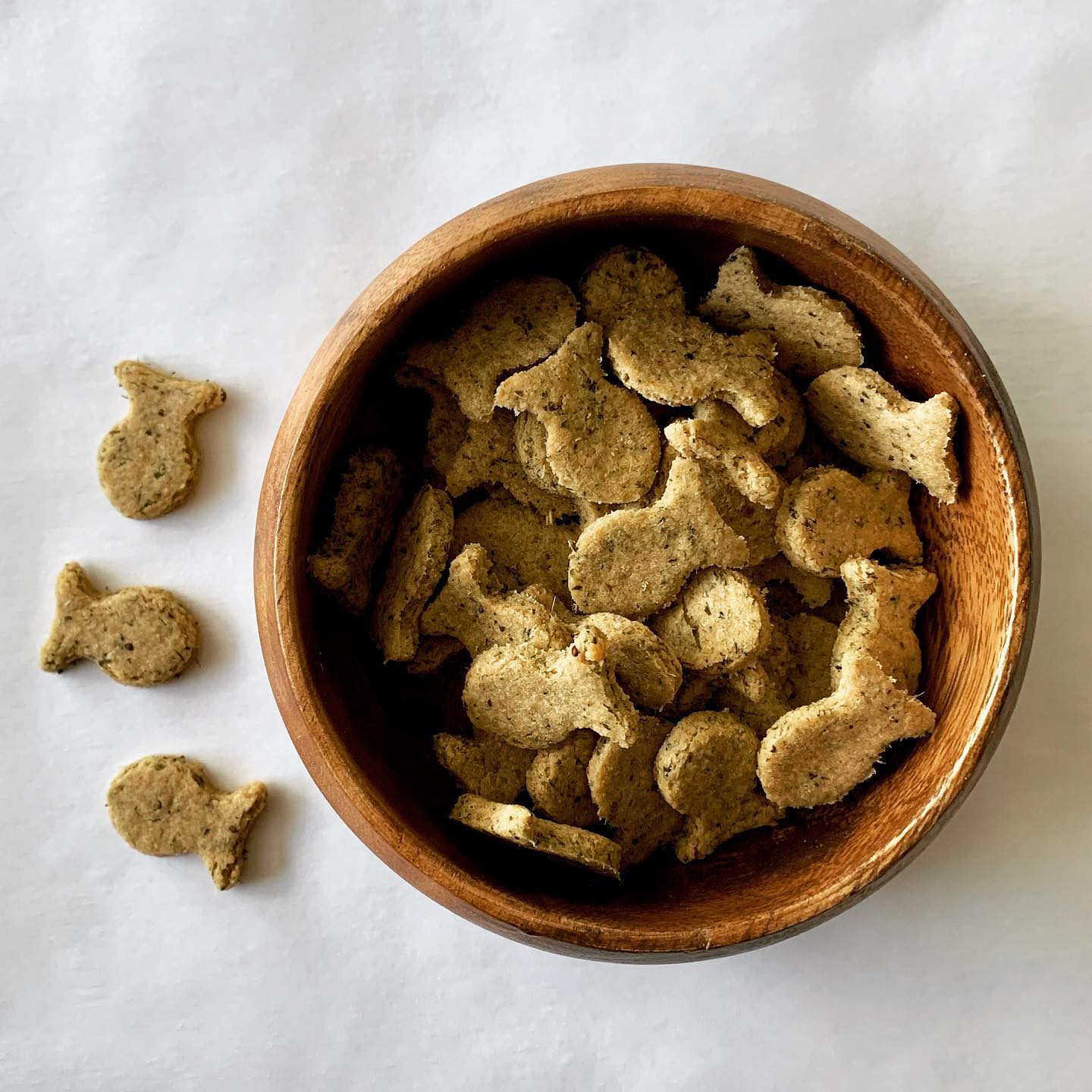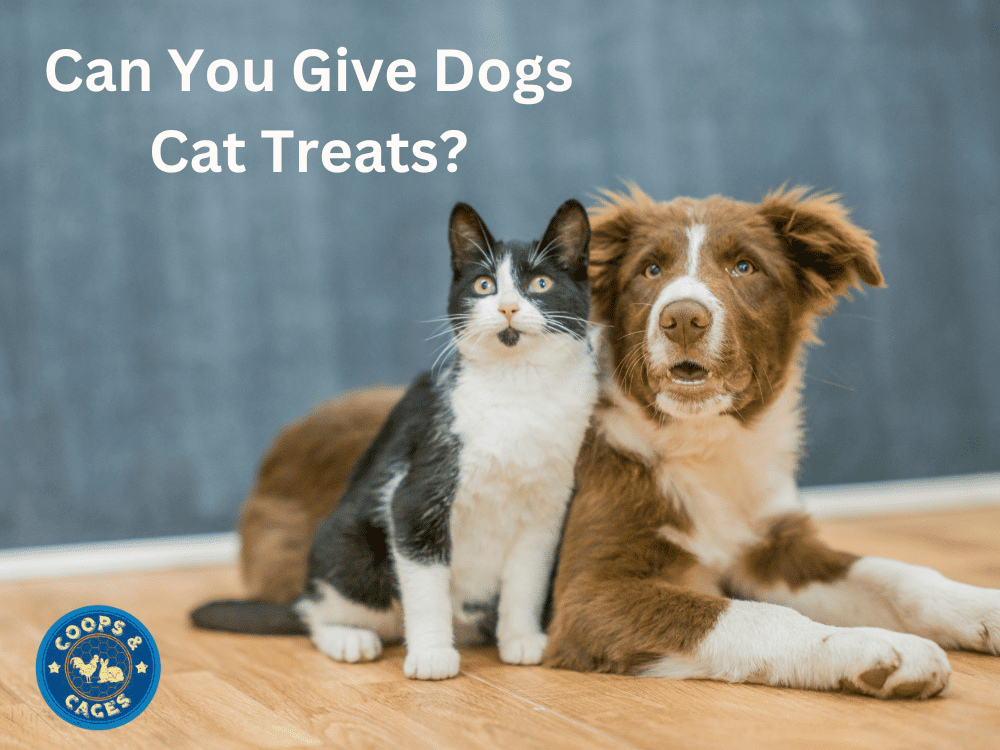Cat treats are not always safe for dogs. Some ingredients can harm them.
Understanding what makes treats safe is important for pet owners. Pets are curious creatures. Dogs often sniff around and eat things they shouldn’t. Cat treats might seem like a harmless snack, but they can pose risks. Ingredients like taurine are great for cats but unnecessary for dogs.
Some treats contain flavors or additives harmful to dogs. Knowing the difference is crucial for keeping pets healthy. Choosing the right treat ensures happiness and safety. Pet owners should be informed and cautious. This blog will explore the safety of cat treats for dogs. You’ll learn what to watch for and how to make safe choices. Protecting your furry friend starts with knowledge.

Credit: www.beauslilbarkery.com
Differences In Cat And Dog Treats
Cat and dog treats might seem similar, but they have distinct differences. These differences arise from their unique dietary needs and preferences. Understanding these variations helps ensure your pet’s health.
Ingredients Variations
Cat treats often contain higher levels of protein. Cats are obligate carnivores, needing more meat-based ingredients. Dog treats may include grains and vegetables. Dogs are omnivores and can digest a wider range of foods. Always check the ingredient list on pet treats. Some cat treats contain fish, which might be appealing to dogs.
Nutritional Needs
Cats require specific nutrients like taurine and arachidonic acid. Dog treats lack these essential nutrients for cats. Dogs need a balanced mix of protein, fats, and carbohydrates. Cat treats might not provide this balance. Feeding dogs cat treats occasionally is usually safe, but not regularly. Dogs might miss out on essential nutrients for their well-being.

Credit: www.einsteinpets.com
Common Ingredients In Cat Treats
Cat treats often intrigue dog owners. They wonder if these treats are safe for their furry friends. Understanding the ingredients is crucial. Cat treats usually contain elements tailored to feline needs. Dogs have different dietary requirements. Let’s explore common ingredients in cat treats.
High Protein Content
Many cat treats boast high protein levels. Cats thrive on protein-rich diets. They need it for muscle development. Dogs also require protein but in balanced amounts. Excessive protein can upset a dog’s stomach. It may lead to digestive issues. Always check protein content before sharing cat treats with dogs.
Flavor Enhancements
Cat treats often include flavor enhancers. These make treats irresistible to cats. Ingredients like fish oil or liver powder are common. Dogs may find these flavors enticing too. Yet, certain enhancers might not suit dogs. Artificial additives can harm canine health. Always read labels carefully. Prioritize natural ingredients for your dog’s safety.
Potential Risks For Dogs
Many dog owners wonder if cat treats are safe for their furry friends. While these treats might seem harmless, they can pose risks for dogs. Understanding these potential dangers is crucial for keeping your pet healthy.
Digestive Issues
Cat treats often contain ingredients designed for cats. These can cause digestive problems in dogs. Dogs have different dietary needs than cats. Consuming cat treats can lead to stomach upset. Diarrhea and vomiting are common symptoms. Watch for changes in your dog’s behavior after eating cat treats.
Allergic Reactions
Some dogs are allergic to certain ingredients in cat treats. Cats can eat fish-based treats, but dogs may react poorly. Skin irritation or hives are signs of an allergy. Itching and swelling can also occur. If your dog shows these symptoms, consult a vet immediately.

Credit: www.coopsandcages.com.au
Nutritional Imbalances
Understanding nutritional imbalances is crucial for pet owners. Cat treats can pose a risk to dogs if not checked. Dogs and cats have different dietary needs. Feeding cat treats to dogs may lead to issues. Let’s delve into the nutritional imbalances that can arise.
Excessive Nutrients
Cat treats often contain high protein levels. Cats require more protein than dogs. Feeding these treats to dogs can cause an overload. Too much protein can lead to health problems. It may stress their kidneys and liver. Other nutrients may also be excessive for dogs. Cat treats may have more fat than dogs need. This can lead to weight gain and obesity.
Deficiency Concerns
Cat treats may lack essential nutrients for dogs. Dogs need certain vitamins that cats do not. A dog consuming cat treats might miss these vitamins. This can lead to deficiencies over time. Dogs also require different minerals than cats. An imbalance can affect their health negatively. Regular consumption might lead to nutritional gaps.
Safe Treat Alternatives
Wondering if cat treats are safe for dogs? You’re not alone. Many pet owners find themselves in a similar situation. Cats and dogs have different nutritional needs. Giving cat treats to dogs might not be the best choice. Luckily, there are safe alternatives for your canine friend. Let’s explore some great options.
Dog-specific Treats
Dog-specific treats are designed with dogs in mind. They contain the right nutrients and ingredients. These treats are safe and promote your dog’s health. They come in various flavors and textures. Your dog will love the variety. Always check the ingredients. Avoid treats with harmful additives.
Homemade Options
Homemade treats are another safe choice. You control the ingredients. Use simple items like peanut butter, pumpkin, and oats. These ingredients are safe and tasty. Baking your own treats ensures quality. Plus, it’s a fun activity. Your dog will appreciate the effort.
Signs Of Adverse Reactions
Feeding cat treats to dogs may cause upset stomachs or skin irritation. Watch for vomiting, diarrhea, or excessive itching. These signs suggest an adverse reaction, indicating the treats may not be suitable for dogs.
Introducing new treats to your pet’s diet can be a delightful experience, but it also requires careful observation. If you’re considering giving your dog cat treats, it’s crucial to monitor for any signs of adverse reactions. These reactions can manifest in various ways, and being aware of them ensures your pet’s safety and well-being.Behavioral Changes
Sudden shifts in your dog’s behavior can be a red flag. Have you noticed increased aggression or unusual lethargy after giving them a cat treat? These could be signs that something isn’t sitting right. Dogs might also become more withdrawn or show signs of discomfort like excessive barking or whining. Keep a close eye on any behavior that seems out of the ordinary. Your dog’s mental state is as important as their physical health. Trust your instincts if something feels off.Physical Symptoms
Physical symptoms can appear quickly and should not be ignored. Is your dog scratching more than usual or displaying hives on their skin? These could indicate an allergic reaction. Look for signs like vomiting or diarrhea, which suggest digestive issues. These symptoms often occur shortly after consuming the treat. Other physical indicators include excessive drooling or a change in breathing patterns. If these occur, consult your vet promptly. Understanding these signs empowers you to make better choices for your dog’s diet. Have you experienced any unexpected reactions in your pet before? Observing your furry friend closely can prevent potential health issues. Always prioritize their health and happiness.Consulting A Veterinarian
Are cat treats safe for dogs? This question puzzles many pet owners. Understanding the dietary needs of dogs is crucial. Consulting a veterinarian offers clarity. A vet can guide you on what’s best for your furry friend. Their expertise ensures your dog’s health remains a priority.
Professional Guidance
Veterinarians have extensive knowledge about pet nutrition. They can advise on the safety of cat treats for dogs. This professional guidance helps avoid harmful ingredients. Vets assess your dog’s health before recommending any treats. They consider allergies, dietary needs, and overall well-being.
Dietary Adjustments
Your dog’s diet may need adjustments. A veterinarian can suggest suitable alternatives. This ensures your dog receives balanced nutrition. Sometimes, special dietary plans are necessary. A vet tailors these plans to your dog’s unique needs. This promotes healthier eating habits.
Conclusion On Treat Safety
Understanding treat safety is crucial for every pet owner. Cats and dogs have different dietary needs. Feeding a dog cat treats can pose risks. Knowing these risks helps in making better choices.
Weighing The Risks
Cat treats often contain high fat. This can lead to weight gain in dogs. Some cat treats have high protein levels. Dogs may not digest them well. Ingredients like taurine are not needed by dogs. These can affect their health negatively. Always check the treat’s ingredients.
Making Informed Choices
Consult a vet before giving cat treats to dogs. Vets understand pet nutrition best. Choose treats designed for dogs. They meet canine dietary needs. Always read labels carefully. Look for natural ingredients. Avoid treats with artificial additives. Ensuring treat safety keeps pets healthy and happy.
Frequently Asked Questions
Is It Okay For A Dog To Eat Cat Treats?
Dogs can eat cat treats occasionally, but it’s not ideal. Cat treats may lack necessary nutrients for dogs. Check ingredients for harmful additives. Regular dog treats are better suited to meet your dog’s dietary needs. Consult your vet for advice tailored to your pet’s health.
Is It Okay For Dogs To Eat Temptations Cat Treats?
Dogs can eat Temptations cat treats occasionally, but it’s not ideal. These treats are formulated for cats and may lack necessary nutrients for dogs. Consult your veterinarian before offering these treats to your dog to ensure they are safe and appropriate for your pet’s diet.
Is There A Difference Between Cat Treats And Dog Treats?
Yes, cat treats and dog treats differ in ingredients and nutritional needs. Cats require more protein, while dogs need fiber. Always choose species-specific treats to ensure your pet’s health and safety. Avoid sharing treats between cats and dogs to prevent digestive issues or nutritional imbalances.
What Happens If My Dog Eats A Whole Bag Of Cat Treats?
Contact your vet immediately if your dog eats a whole bag of cat treats. Monitor for vomiting, diarrhea, or lethargy. Cat treats can upset a dog’s stomach and potentially lead to pancreatitis. Ensure your dog stays hydrated and avoid self-treatment.
Always store pet treats out of reach.
Conclusion
Cat treats can sometimes be safe for dogs. But not always. Check ingredients first. Avoid treats with harmful additives. Consult your vet if unsure. Dogs and cats have different dietary needs. Choose treats made for dogs. It’s safer that way.
Your dog’s health matters. Treats should be a small part of their diet. Balance is key. Always prioritize your dog’s wellbeing. Make informed choices. Keep treats special and occasional. Your furry friend deserves the best. Consider their health and happiness.
A little research goes a long way. Keep your dog safe and satisfied.